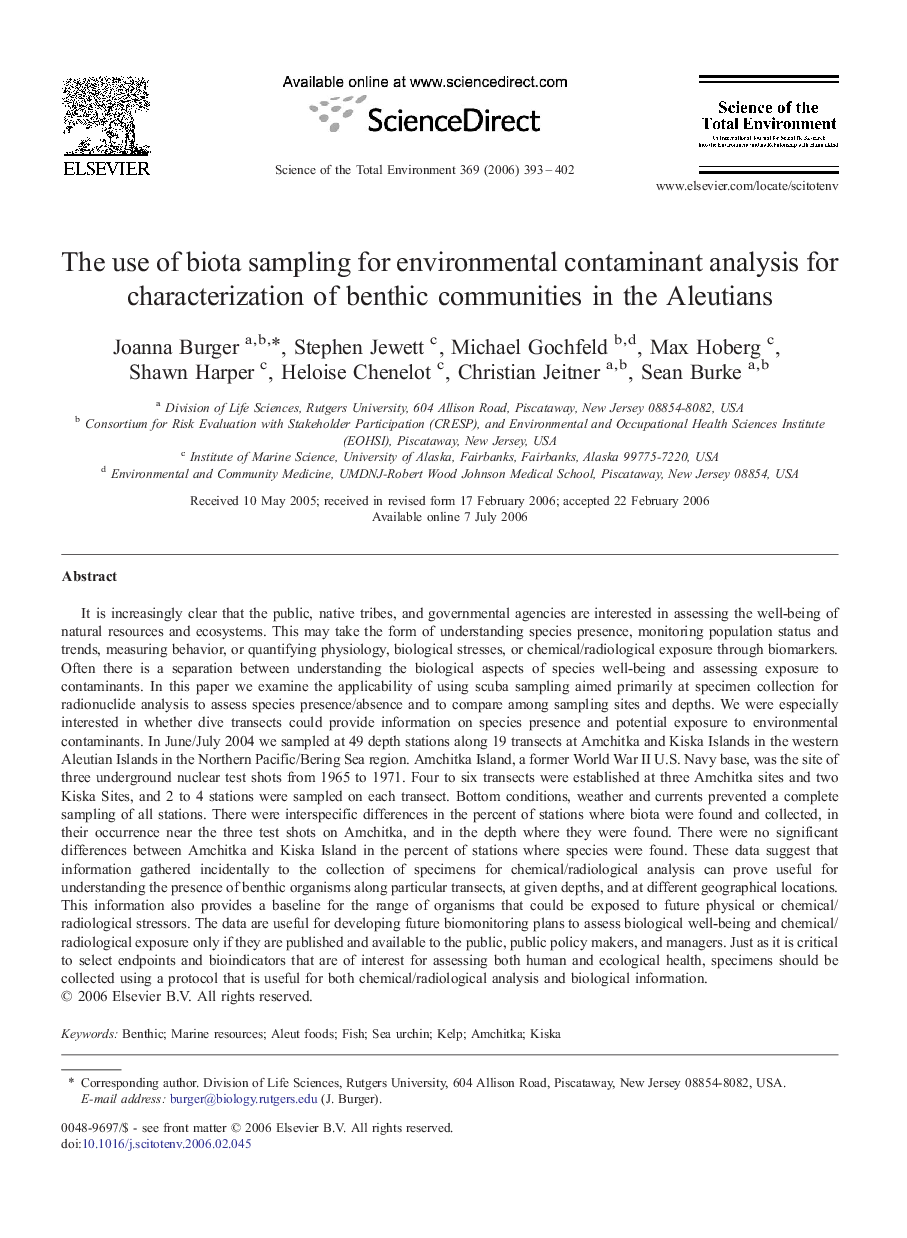| کد مقاله | کد نشریه | سال انتشار | مقاله انگلیسی | نسخه تمام متن |
|---|---|---|---|---|
| 4433966 | 1619966 | 2006 | 10 صفحه PDF | دانلود رایگان |

It is increasingly clear that the public, native tribes, and governmental agencies are interested in assessing the well-being of natural resources and ecosystems. This may take the form of understanding species presence, monitoring population status and trends, measuring behavior, or quantifying physiology, biological stresses, or chemical/radiological exposure through biomarkers. Often there is a separation between understanding the biological aspects of species well-being and assessing exposure to contaminants. In this paper we examine the applicability of using scuba sampling aimed primarily at specimen collection for radionuclide analysis to assess species presence/absence and to compare among sampling sites and depths. We were especially interested in whether dive transects could provide information on species presence and potential exposure to environmental contaminants. In June/July 2004 we sampled at 49 depth stations along 19 transects at Amchitka and Kiska Islands in the western Aleutian Islands in the Northern Pacific/Bering Sea region. Amchitka Island, a former World War II U.S. Navy base, was the site of three underground nuclear test shots from 1965 to 1971. Four to six transects were established at three Amchitka sites and two Kiska Sites, and 2 to 4 stations were sampled on each transect. Bottom conditions, weather and currents prevented a complete sampling of all stations. There were interspecific differences in the percent of stations where biota were found and collected, in their occurrence near the three test shots on Amchitka, and in the depth where they were found. There were no significant differences between Amchitka and Kiska Island in the percent of stations where species were found. These data suggest that information gathered incidentally to the collection of specimens for chemical/radiological analysis can prove useful for understanding the presence of benthic organisms along particular transects, at given depths, and at different geographical locations. This information also provides a baseline for the range of organisms that could be exposed to future physical or chemical/radiological stressors. The data are useful for developing future biomonitoring plans to assess biological well-being and chemical/radiological exposure only if they are published and available to the public, public policy makers, and managers. Just as it is critical to select endpoints and bioindicators that are of interest for assessing both human and ecological health, specimens should be collected using a protocol that is useful for both chemical/radiological analysis and biological information.
Journal: Science of The Total Environment - Volume 369, Issues 1–3, 1 October 2006, Pages 393–402